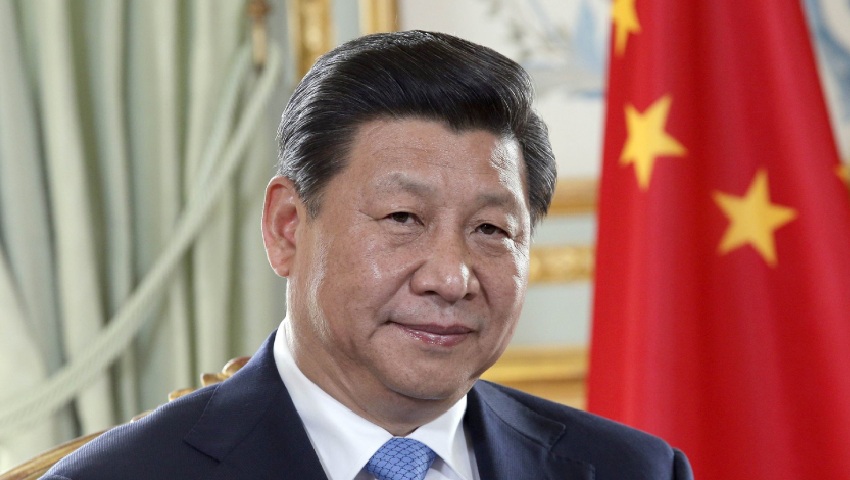Last year, US General John Hyten explained that China’s rate of military innovation was “stunning”. Despite closing the gap on the United States’ uncertain qualitative military advantage, analysts nevertheless believe that China will continue to use grey zone and hybrid operations to extend influence into Taiwan as part of the country’s objective to reunify China.
To continue reading the rest of this article, please log in.
Create free account to get unlimited news articles and more!
Throughout eight years of unrest in Ukraine, modern spectators have observed the efficacy of hybrid and grey zone activities in real time. From political coercion in Crimea, to SOF-intelligence operations conducted by Russia’s little green men and concerted media campaigns to elicit behavioural responses from a target population – such concepts of irregular warfare have been evidenced as an effective tool to exert competitive control over the battlefield and wider body politic.
It has been a lesson in winning a war without (notionally) firing a shot.
Australia is no stranger to such concepts of grey zone and hybrid warfare, with economic coercion forming an essential tool in China’s non-kinetic arsenal. Few countries have been on the receiving end of Beijing’s economic warfare more than Australia, with restrictions placed on Australian barley, wine, timber, coal and lobsters. Some media outlets have reported that the restrictions have gone even further, with some Chinese companies refusing to work with Australian sellers.
With a poorly diversified export market, such restrictions not only shudder individual sectors to a halt, but also force the hand of Canberra as Australia’s economic ecosystem slows. Such examples were evidenced in 2017 when China restricted trade and tourism to South Korea in response to its installation of the US Terminal High Altitude Area Defense missile interceptor (THAAD), which reportedly gave radar intelligence deep into China’s interior. South Korean industry was dealt a devastating blow by the Chinese sanctions with sources suggesting that the sanctions cost the South Korean economy 8.5 trillion won (an estimated $9.9 billion in today’s AUD).
Writing in the Small Wars Journal, Professor of society computing at Carnegie Mellon University Kathleen Carley and PhD candidate Charity Jacobs explain how China’s contemporary strategy to extend influence in Taiwan rests firmly in such grey zone activities, rather than solely via conventional warfare.
According to the pair, this proclivity to grey zone operations was a learned behaviour from the United States, with China observing how the US symbiotically used both kinetic and non-kinetic means to exert competitive control across the world.
“The two US-coalition Gulf Wars played a critical part in modernising the Chinese People’s Liberation Army (PLA) doctrine. Desert Storm in 1991 would renew international thinking on the notion of revolution in military affairs (RMA) theory and was a significant wake-up call for the PLA that modernisation efforts were necessary if China was to become a world power capable of fighting wars of the future,” the pair notes.
While learning about US military capabilities throughout the engagement, Beijing further observed the beneficial application of information warfare disseminated via both traditional and non-traditional outlets to generate support for the United States and their coalition partners throughout the conflict.
“Although Beijing sharply criticised the legality of US military interventions abroad after the first Gulf War, Chinese analysts observed with great interest the way US leaders manipulated foreign and domestic public opinion,” the pair argues.
In fact, Carley and Jacobs argue that CNN and NBC were so vociferously supportive of military action in the region that many Chinese analysts believed the outlets to be controlled by the US government and Department of Defense, spurring China’s desire for large-scale outlets to legitimise potential Chinese military activities via the information vector.
“The PLA introduced Three Warfares doctrine in 2003, centred around psychological warfare, public opinion warfare, and legal warfare in response to the effective psychological operations and effective use of media executed in the Iraq War and other recent conflicts,” the pair argues.
“Base 311 or Unit 61716 is China’s premier psychological warfare unit under its Strategic Support Force, the PLA’s branch with cyber, cyber and electronic warfare capabilities (Costello and McReynolds, 2018).”
The pair argues that this Three Warfares doctrine was designed to enable China to undertake military operations during peacetime, resulting in “peacetime-wartime integration”.
As such, falling below the threshold of armed conflict, China could undertake military actions and compel nations to their political end goal through behavioural influence. Carley and Jacobs cite China’s “cognitive domain operations” as an example of this.
“PLA theorist Zeng Huafeng defined tactics to win mind superiority: 1) “perception manipulation” through propaganda narratives; 2) “cutting off historical memory” so that targets will be open to new values; 3) “changing the paradigm of thinking” by targeting elites to change their ideology; and 4) “deconstructing symbols” to challenge national identity (Kunlun, 2014),” they note.
The pair notes that these grey zone activities are currently being employed to place pressure on Taiwan and influence the government, military, businesses and population.
Such legally grey “peacetime-wartime integration” activities include the dissemination of disinformation to foment division and distrust to the government, continued economic integration between the two countries as well as the continued threat of military invasion.
Get involved with the discussion and let us know your thoughts on Australia’s future role and position in the Indo-Pacific region and what you would like to see from Australia's political leaders in terms of partisan and bipartisan agenda setting in the comments section below, or get in touch with

 Login
Login







